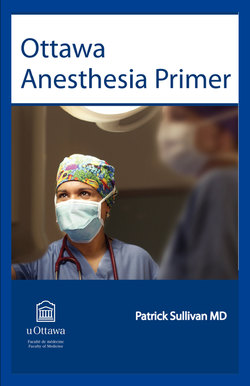Читать книгу Ottawa Anesthesia Primer - Patrick Sullivan - Страница 90
На сайте Литреса книга снята с продажи.
IV. Insertion of the ETT:
ОглавлениеIntubation is performed with the left hand controlling the laryngoscope blade while the right hand opens the patient’s mouth and then passes the ETT tip through the laryngeal inlet under direct visualization. When a limited laryngeal view is encountered, the epiglottis can be used as a landmark for guiding the ETT between the hidden vocal cords. The tip of the ETT is passed underneath the epiglottis and anterior to the esophageal inlet. Note that the glottis lies anterior to the esophagus (or above the esophagus during laryngoscopy). When the epiglottis partially obscures the view of the glottis, an assistant can be asked to apply pressure to the thyroid cartilage by displacing it in a direction that is backwards, upward, and towards the right side of the patient. This maneuver is called the “BURP” maneuver (Fig. 6.14). It is used to move the larynx in a manner that improves the clinician’s view of the glottis. The BURP maneuver should not be confused with the application of cricoid pressure. Cricoid pressure is discussed in Chapter 9: Rapid Sequence Induction.
A malleable stylet that is shaped to form a distal anterior curve of approximately 35° can be helpful to guide the ETT tip through the laryngeal inlet and should be used for all difficult and/or emergency intubations. Use of an endotracheal stylet that is configured with a more acute 90° “hockey stick” configuration is discouraged as this may result in trauma to the anterior trachea on insertion as well as ETT displacement when the stylet is removed.
When there is a limited view of the ETT passing through the vocal cords, the Ford Maneuver can help with visual confirmation of its correct placement in the glottis immediately after intubation. The maneuver is performed by displacing the glottis posteriorly using downward pressure on the ETT while lifting with the laryngoscope to expose the glottis and ETT. This maneuver is useful in the patient with a grade 3 or 4 larynx when difficulty is encountered visualizing the glottic structures.
The cuff of the ETT should be observed to pass between the vocal cords and should be positioned just inferior (approximately 2 cm) to the vocal cords. Before withdrawing the laryngoscope blade from the patient’s mouth, it is helpful to note the length of the ETT at the patient’s lips using the cm markers on the ETT. This will be useful information should the ETT move before it can be secured. The usual distance from the tip of the ETT to the patient’s mouth is approximately 21 - 24 cm in adult males and 18 – 22 cm in adult females. The ETT cuff is inflated with just enough air to create a seal around the ETT during positive pressure ventilation. A cuff leak may be detected by listening at the patient’s mouth or over the larynx.
Bimanual laryngoscopy is an essential maneuver to improve the glottic view when an inadequate view is obtained on first attempt. The maneuver is performed by the clinician using the left hand to lift the laryngoscope blade while the right thumb and forefinger are used to manipulate the thyroid cartilage externally by pushing it posteriorly or to the right to obtain a better view of the glottis. Once an optimal view is obtained, an assistant’s hand replaces the clinician’s right hand to maintain the thyroid manipulation. The clinician then uses the right hand to direct the ETT into the glottis.
